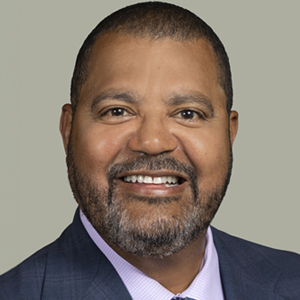When medical professionals fail to meet the accepted standard of care, the consequences can be life-altering. At Schochor, Staton, Goldberg and Cardea, P.A., our Bel Air medical negligence lawyers are dedicated to helping injured patients pursue justice. With years of experience and a strong record of success, we offer compassionate guidance and advocacy to help you navigate the complexities of medical malpractice claims.
What Is Medical Negligence?
Medical negligence occurs when a healthcare provider’s care falls below what a competent professional in the same field would deliver under similar circumstances, resulting in preventable harm. This breach of trust can have severe physical, emotional, and financial impacts on patients and their families. Understanding how negligence occurs is the first step toward seeking accountability.
Examples of medical negligence include performing the wrong surgery, failing to diagnose a serious illness, or administering an incorrect medication. Delayed diagnoses, such as failing to detect cancer early, often lead to worsened outcomes that could have been prevented with proper care.
Our law firm investigates claims thoroughly, consulting with medical experts to uncover where providers deviated from accepted standards. If you believe a provider’s negligence caused harm, we are here to help you take the necessary steps toward justice and compensation.
Holding Healthcare Institutions Accountable for Systemic Failures
While individual providers are often the focus of medical malpractice claims, systemic issues within healthcare institutions also contribute to negligence. Problems such as understaffing, lack of proper training, or inadequate safety protocols place patients at risk. Holding institutions accountable for these failures is essential to creating safer environments for everyone.
Hospitals and clinics have a responsibility to implement policies that prevent errors and support their staff in delivering high-quality care. For instance, ensuring sufficient staffing levels in critical care units can reduce the likelihood of errors caused by fatigue or rushed decisions. Similarly, investing in state-of-the-art equipment and rigorous staff training programs enhances patient safety.
Our firm understands the complexities of pursuing claims against large healthcare institutions. By investigating systemic failures and exposing patterns of negligence, we work to hold these facilities accountable. Addressing these issues not only helps victims recover compensation but also drives meaningful changes that improve patient safety in the long term.
The Importance of Patient Advocacy in Preventing Negligence
Patient advocacy plays a critical role in reducing the risk of medical negligence and ensuring high-quality care. By actively participating in their healthcare decisions, patients can help identify potential errors and address concerns before they escalate. Advocating for yourself or a loved one can make a meaningful difference in the level of care provided.
Patients can advocate for their rights by asking questions, understanding treatment options, and seeking second opinions when something feels unclear. For example, confirming medication names and dosages can help catch potential errors before they occur. Additionally, documenting symptoms and medical advice creates a record that can be referenced during future appointments.
Family members also play an essential role in patient advocacy, particularly for those unable to advocate for themselves. Caregivers can monitor treatment plans, communicate with providers, and ensure that proper care is delivered. Together, patients and their advocates help create a safer and more accountable healthcare environment.
Common Types of Medical Negligence in Bel Air
Medical negligence can occur in a wide range of settings, from hospitals and clinics to private practices throughout Bel Air. These errors are often the result of miscommunication, lack of training, or failure to follow established protocols. Patients harmed by negligence frequently face long-term health consequences, emotional distress, and unexpected financial burdens.
Birth Injuries
Birth injuries are among the most devastating examples of medical negligence, often leaving lasting effects on both the baby and mother. Conditions such as cerebral palsy or brachial plexus injuries may result from oxygen deprivation or improper use of delivery tools. These preventable injuries frequently require long-term medical care, therapy, and adaptive equipment.
Diagnostic Errors
Misdiagnosis or delayed diagnosis can have serious consequences for patients with critical conditions such as strokes or heart disease. A failure to recognize symptoms early often limits treatment options, leading to complications or preventable deaths. Thorough diagnostic evaluations are essential to providing timely and effective care.
Surgical Errors
Surgical errors, such as performing the wrong procedure or leaving tools inside a patient, can lead to infections, additional surgeries, or permanent harm. These mistakes often stem from miscommunication among surgical staff or failure to follow safety protocols. Patients affected by surgical negligence often face prolonged recovery periods and diminished quality of life.
Medication Mistakes
Medication errors include prescribing the wrong drug, administering incorrect dosages, or failing to monitor adverse reactions. These mistakes can result in overdoses, untreated conditions, or dangerous interactions. Proper oversight and accurate recordkeeping are critical to preventing these errors.
How Medical Negligence Impacts Patients and Families
The consequences of medical negligence extend far beyond the initial harm, often disrupting nearly every aspect of a patient’s life. Physically, patients may face long recovery periods, chronic pain, or permanent disabilities that limit their ability to work or engage in daily activities.
Families often bear a significant emotional and financial burden, from covering unexpected medical expenses to taking on caregiving responsibilities. The stress of navigating these challenges can lead to frustration, grief, and a profound sense of loss. Pursuing a malpractice claim can provide the resources needed to rebuild your life and hold negligent providers accountable.
Steps to Protect Your Rights After Medical Negligence
Taking immediate action after experiencing medical negligence is critical to preserving your rights and building a strong case. Acting promptly ensures that you can collect valuable evidence, seek legal advice, and understand the scope of your claim. Below, we outline the steps necessary to safeguard your legal and medical interests:
Step 1: Seek Legal Guidance
Consulting with a Bel Air medical malpractice lawyer ensures that your claim is handled with expertise and professionalism. A legal team can evaluate the details of your situation, identify responsible parties, and navigate Maryland’s legal requirements for malpractice claims.
Experienced attorneys also provide access to medical experts who can validate your case by confirming where and how the standard of care was breached. This collaboration ensures that your claim is supported by credible evidence and well-prepared for negotiations or litigation.
Step 2: Collect Evidence of Negligence
Your medical malpractice lawyer in Bel Air can gather all documentation related to your medical care, including treatment records, diagnostic test results, prescriptions, and communication with healthcare providers. These records provide essential details about the care you received and where it may have fallen short. For example, treatment notes might reveal inconsistencies in diagnosis or missed opportunities for earlier intervention.
Photographs, personal notes, and written timelines can also serve as valuable evidence. Documenting changes in your symptoms, interactions with providers, and the impact on your daily life strengthens your claim. A detailed and organized collection of evidence lays the groundwork for a compelling case.
Step 3: Act Quickly to Preserve Evidence
Time is a critical factor in medical negligence cases. Acting promptly allows you to secure witness testimony, obtain expert evaluations, and file your claim within Maryland’s legal deadlines. Evidence becomes harder to collect and less reliable as time passes, making early action essential.
Working with a skilled legal team helps ensure that every detail of your claim is addressed promptly. By taking these steps, you protect your rights and improve your chances of achieving a favorable outcome.
Overcoming the Complexities of Medical Negligence Claims in Bel Air
Medical negligence claims require more than proving that an error occurred; they involve demonstrating how the provider’s actions directly caused harm. This process often requires expert testimony to establish how a competent provider would have acted under the same circumstances. These complexities make legal representation essential to building a strong claim.
Local knowledge is another critical factor in handling medical negligence claims in Bel Air. Familiarity with the policies, procedures, and systemic challenges of local healthcare facilities allows legal teams to uncover patterns of negligence or procedural failures. For example, understanding how institutions like Upper Chesapeake Medical Center operate can provide insights into potential systemic issues contributing to your harm.
By combining legal expertise with localized knowledge, our team is uniquely positioned to address the challenges of medical negligence claims in Bel Air. We work tirelessly to ensure that every aspect of your case is handled with precision and care.
What Compensation Can You Seek in a Medical Negligence Case?
Compensation in medical negligence cases is designed to address both the measurable financial losses and the intangible harm caused by negligent care. Victims may be eligible for a range of damages that reflect the full extent of their injuries and challenges.
- Economic Damages: These damages cover tangible losses, such as medical expenses, rehabilitation costs, and lost wages. For example, a patient requiring multiple corrective surgeries or ongoing therapy may face substantial medical bills and time away from work. Compensation for these expenses helps alleviate the financial burden and supports recovery.
- Non-Economic Damages: Intangible losses, such as pain, suffering, and emotional distress, are also considered in medical negligence claims. These non-economic damages recognize the psychological impact of negligence, such as anxiety, depression, or loss of enjoyment in daily activities. For instance, a patient who experiences permanent mobility issues may seek compensation for their diminished quality of life.
By pursuing a comprehensive compensation package, victims can address both immediate and future needs. Our team works diligently to calculate the full extent of damages and advocate for fair outcomes that reflect your unique situation.
Bel Air Medical Malpractice FAQs
What is the statute of limitations for medical malpractice claims in Maryland?
In Maryland, as outlined in Maryland Code, Courts and Judicial Proceedings § 5-109, the statute of limitations for medical malpractice cases is generally three years from the date the injury is discovered or five years from the date the negligence occurred, whichever comes first. This timeframe ensures that claims are filed while evidence remains accessible and witnesses can provide reliable testimony.
Acting promptly is crucial to preserving your right to seek compensation. Filing your claim early allows your legal team to gather critical evidence, such as medical records and expert evaluations before these resources are lost or become unavailable. Missing the deadline could result in losing your ability to pursue justice entirely.
How do I prove negligence in a medical malpractice case?
Proving negligence requires demonstrating that the healthcare provider failed to meet the accepted standard of care in their profession. This involves showing that another competent provider would have acted differently under similar circumstances. Evidence such as medical records, expert testimony, and documentation of harm is essential to building a strong case.
A skilled legal team will investigate the details of your claim and consult with experts who can validate where the care deviated from accepted practices. This process strengthens your case by providing clear, credible evidence that establishes liability and causation.
What should I do if the hospital denies responsibility?
Hospitals and healthcare providers often deny responsibility for negligence to avoid liability. They may claim that complications were unavoidable or unrelated to their actions. These defenses can make it challenging to secure compensation without thorough investigations and legal representation.
Your legal team will work to uncover evidence that contradicts these defenses, such as identifying systemic issues like understaffing or inadequate training. By presenting clear and compelling evidence, your lawyer can hold the hospital accountable and pursue justice on your behalf.
Do I need expert witnesses for my medical malpractice case?
Expert witnesses play a crucial role in medical malpractice cases by explaining how a provider’s actions deviated from the standard of care. Their testimony helps clarify complex medical concepts for judges and juries, strengthening your claim.
Maryland law often requires expert certification to proceed with a malpractice claim, ensuring that the case is supported by credible evidence. Working with an experienced legal team ensures access to reputable medical experts who can validate your case and provide persuasive testimony.
Contact Our Trusted Bel Air Medical Malpractice Lawyers for Help
When medical negligence disrupts your life, having experienced legal advocates can make all the difference. At Schochor, Staton, Goldberg and Cardea, P.A., we are committed to helping you pursue justice and the compensation you deserve. Contact us today to schedule a free consultation and learn how we can support you through this process.












